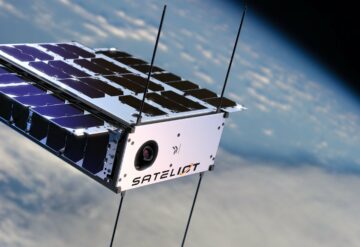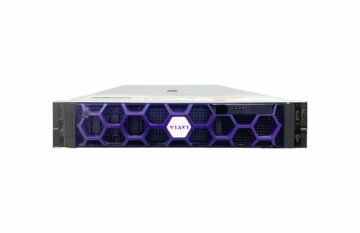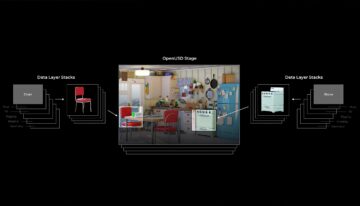
.pp-multiple-authors-boxes-wrapper {display:none;}
img {width:100%;}
The oil and gas industry is experiencing a surge in the adoption of IoT devices, according to a new report from Berg Insight.
Berg Insight’s report forecasts that the installed base of wireless devices featuring cellular, satellite, or low-power wide-area (LPWA) connectivity in the industry will grow at a compound annual growth rate (CAGR) of 19.3 percent, increasing from 7.8 million units at the end of 2023 to 18.8 million connected devices by 2028.
The primary application driving this growth is remote monitoring of assets such as industrial equipment, tanks, and pipeline infrastructure in the midstream and downstream sectors. The anticipated growth in cellular device shipments is attributed to a higher adoption rate of sensor applications based on LTE-M and NB-IoT technologies and the continued preference for cellular communications in the remote tank monitoring segment.
Berg Insight analysts believe that non-3GPP LPWA technologies like LoRa can also achieve a significant position in this market, as many remote monitoring applications have limited bandwidth requirements.
Partnerships among industrial automation vendors and technology companies continue to be a trend in the oil and gas industry, expanding in scope to include oil and gas operators and software companies.
Global automation vendors such as ABB, Emerson, Hitachi, Honeywell, Rockwell Automation, Schneider Electric, Siemens, and Yokogawa can deliver complete solutions thanks to their extensive partner ecosystems.
The choice of preferred network topology and communications standards depends on the application area, as each activity in the oil and gas value chain has its own specific connectivity needs.
Many providers recognise the industry’s diverse needs by integrating different wireless capabilities into single-box solutions. Connectivity providers such as Advantech, Cisco, HMS Networks, Moxa, MultiTech, and Robustel offer modular routers and gateways where different wireless interfaces can be added to the device.
“Oil and gas companies are increasingly relying on data from IIoT devices to make better-informed decisions,” said Veronika Barta, IoT Analyst at Berg Insight.
As operators move towards more remote and autonomous operations, the need to collect greater volumes of data increases—necessitating edge processing capabilities to acquire data significance.
“Deployments of wireless IIoT devices with edge computing will be key to optimising assets and improving oil and gas operations,” Barta concludes.
(Photo by Zbynek Burival)
See also: Retail faces continued threat from IoT botnets


Want to learn about the IoT from industry leaders? Check out IoT Tech Expo taking place in Amsterdam, California, and London. The comprehensive event is co-located with other leading events including Cyber Security & Cloud Expo, AI & Big Data Expo, Edge Computing Expo, and Digital Transformation Week.
Explore other upcoming enterprise technology events and webinars powered by TechForge here.
- SEO Powered Content & PR Distribution. Get Amplified Today.
- PlatoData.Network Vertical Generative Ai. Empower Yourself. Access Here.
- PlatoAiStream. Web3 Intelligence. Knowledge Amplified. Access Here.
- PlatoESG. Carbon, CleanTech, Energy, Environment, Solar, Waste Management. Access Here.
- PlatoHealth. Biotech and Clinical Trials Intelligence. Access Here.
- Source: https://www.iottechnews.com/news/2024/apr/04/oil-and-gas-industry-rapid-growth-iot-devices/
- :has
- :is
- :where
- 00
- 100
- 19
- 2023
- 2028
- 5G
- 7
- 8
- 90
- a
- About
- According
- Achieve
- acquire
- activity
- added
- Adoption
- also
- among
- amsterdam
- analyst
- Analysts
- and
- annual
- Anticipated
- Application
- applications
- April
- ARE
- AREA
- around
- articles
- AS
- Assets
- At
- author
- Automation
- autonomous
- avatar
- background
- Bandwidth
- base
- based
- BE
- believe
- Big
- Big Data
- by
- CAGR
- california
- CAN
- capabilities
- categories
- cell
- cellular
- chain
- check
- choice
- Cisco
- Cloud
- collect
- Communications
- Companies
- compelling
- complete
- complex
- Compound
- comprehensive
- computing
- concludes
- connected
- connected devices
- Connectivity
- continue
- continued
- cutting-edge
- data
- decade
- decisions
- deliver
- depends
- developments
- device
- Devices
- different
- diverse
- driving
- each
- Ecosystems
- Edge
- edge computing
- editor
- Electric
- end
- Enterprise
- equipment
- Ether (ETH)
- Event
- events
- expanding
- experiencing
- expertise
- extensive
- faces
- Featuring
- Figures
- Find
- For
- forecasts
- Forrester
- from
- gained
- GAS
- gateways
- greater
- Grow
- Growth
- Have
- here
- higher
- him
- his
- hitachi
- Honeywell
- HOT
- houses
- HTTPS
- identifying
- improving
- in
- include
- Including
- increasing
- increasingly
- industrial
- industrial automation
- industrial equipment
- Industrial IoT
- industry
- industry’s
- influencer
- Infrastructure
- insight
- insights
- installed
- Integrating
- interfaces
- Internet
- internet of things
- Interviews
- into
- iot
- iot devices
- ITS
- journalism
- jpeg
- Key
- latest
- Latest News
- leaders
- leading
- LEARN
- lies
- like
- Limited
- London
- machine
- make
- many
- Market
- Mastodon
- max-width
- Media
- million
- modular
- monitoring
- more
- most
- move
- narratives
- Need
- needs
- network
- networks
- New
- news
- None
- of
- offer
- Oil
- Oil and Gas
- on
- Operations
- operators
- optimising
- or
- Organisations
- Other
- out
- over
- own
- partner
- percent
- performance
- photo
- pipeline
- Place
- plato
- Plato Data Intelligence
- PlatoData
- position
- Posts
- powered
- preferred
- primary
- processing
- providers
- publications
- published
- rapid
- Rate
- Read
- recognise
- recognition
- relying
- remote
- report
- Requirements
- research
- Research News
- Ryan
- Said
- satellite
- Schneider Electric
- scope
- seasoned
- Sectors
- security
- sees
- segment
- senior
- Siemens
- significance
- significant
- since
- site
- Social
- Software
- Solutions
- spanning
- specific
- standards
- Stewardship
- such
- surge
- TAG
- taking
- tank
- Tanks
- tech
- tech news
- technological
- Technologies
- Technology
- technology companies
- thanks
- that
- The
- their
- things
- this
- threat
- to
- Topics
- towards
- Transformation
- Trend
- Trends
- under
- units
- upcoming
- value
- vendors
- volumes
- weaving
- Webinars
- will
- wireless
- with
- X
- zephyrnet












